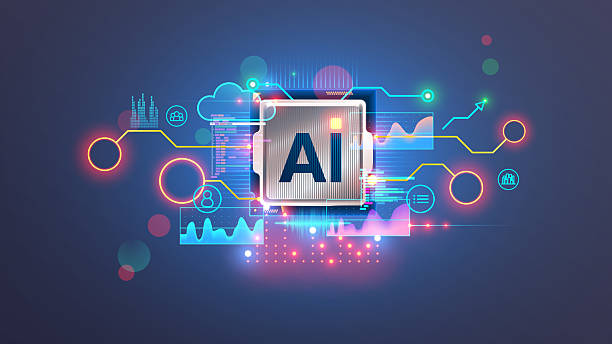What is Artificial Intelligence: Definition, History, and Fundamental Concepts

#Artificial_Intelligence (AI), which is abbreviated as AI, is a branch of computer science that deals with building machines that are capable of performing tasks that usually require human intelligence.
These tasks include learning, reasoning, problem-solving, perception, pattern recognition, and natural language.
In other words, the goal of artificial intelligence is to simulate human intelligence in machines.
The history of artificial intelligence dates back to the 1950s when scientists like Alan Turing, Marvin Minsky, and John McCarthy began researching in this field.
The Turing Test is a criterion for measuring a machine’s ability to demonstrate intelligent behavior that is indistinguishable from human behavior.
In the following decades, artificial intelligence experienced many ups and downs, from periods of hope and large investments to periods of recession and budget cuts.
Fundamental concepts of artificial intelligence include machine learning algorithms that allow machines to learn from data and improve their performance without explicit programming.
Deep Learning is a subset of machine learning that uses artificial neural networks with multiple layers to analyze data.
Natural Language Processing (NLP) allows machines to understand and generate human language.
Computer Vision allows machines to see, interpret, and extract information from images.
The ultimate goal of #Artificial_Intelligence is to create systems that can make decisions independently, solve problems, and interact with their environment.
These systems can be used in various fields, including medicine, industry, transportation, education, and entertainment.
Does your current company website not reflect the credibility and power of your brand as it should? Resaweb solves this challenge for you with professional company website design.
✅ Increase the credibility and trust of visitors
✅ Attract more targeted customers
⚡ Click to get free consultation!
Types of Artificial Intelligence: A Look at Approaches and Applications

Artificial intelligence can be categorized based on various criteria, including abilities, functions, and type of learning.
One of the common classifications is dividing artificial intelligence into two general types: Weak AI (Narrow AI) and Strong AI (General AI).
Weak AI (also known as specialized AI) is designed to perform a specific task.
This type of #Artificial_Intelligence performs very well in the task for which it is programmed, but it cannot perform other tasks.
Examples of weak AI include voice assistants like Siri and Alexa, recommendation systems like the Netflix recommendation system, and facial recognition systems.
Strong AI (also known as general AI or AGI) has cognitive abilities similar to humans.
This type of #Artificial_Intelligence can learn, reason, solve problems, and interact with its environment, just like a human.
Currently, strong AI is still in the research stages and no real strong AI systems exist.
Based on the learning approach, #Artificial_Intelligence can be divided into three categories: supervised learning, unsupervised learning, and reinforcement learning.
In supervised learning, the machine is trained using labeled data.
In unsupervised learning, the machine is trained using unlabeled data.
In reinforcement learning, the machine learns by receiving rewards or penalties in return for its actions.
The applications of artificial intelligence are very wide and diverse.
#Artificial_Intelligence is used in medicine for diagnosing diseases, developing drugs, and providing personalized healthcare.
In industry, #Artificial_Intelligence is used for automating processes, quality control, and optimizing the supply chain.
In transportation, #Artificial_Intelligence is used for developing self-driving cars and traffic management systems.
In education, #Artificial_Intelligence is used for providing personalized training and evaluating student performance.
In entertainment, #Artificial_Intelligence is used for creating video games, producing music, and making movies.
Machine Learning: The Backbone of Artificial Intelligence – Algorithms and Applications

Machine Learning is a subset of #Artificial_Intelligence that allows machines to learn from data and improve their performance without explicit programming.
In fact, instead of giving machines explicit instructions to perform a task, machine learning allows them to discover patterns and relationships in data and make predictions and decisions based on them.
There are different types of machine learning algorithms, each suitable for a specific type of data and problems.
Some of the most common machine learning algorithms include linear regression, logistic regression, decision trees, support vector machines (SVM), neural networks, and clustering algorithms.
| Algorithm | Type | Application |
|---|---|---|
| Linear Regression | Supervised Learning | Predicting continuous values |
| Logistic Regression | Supervised Learning | Data classification |
| Decision Trees | Supervised Learning | Classification and Regression |
| Support Vector Machines | Supervised Learning | Classification and Regression |
| Clustering Algorithms | Unsupervised Learning | Grouping data |
The applications of machine learning are very wide.
In #medicine, machine learning is used for diagnosing diseases, predicting the risk of diseases, and providing personalized treatments.
In finance, machine learning is used for fraud detection, credit risk assessment, and investment management.
In marketing, machine learning is used for targeting advertising, personalizing offers, and predicting customer behavior.
In manufacturing, machine learning is used for optimizing processes, predicting equipment failure, and quality control.
In short, machine learning is a powerful tool that can be used in many fields to solve problems and improve performance.
Deep Learning: Revolution in Artificial Intelligence – Neural Networks and Applications
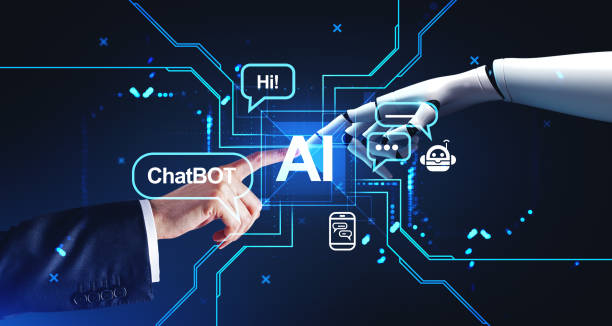
Deep Learning is a subset of machine learning that uses artificial neural networks with multiple layers to analyze data.
These networks, inspired by the structure of the human brain, are capable of learning complex patterns in data and can perform tasks that previously seemed impossible for machines.
In general, deep learning allows #Artificial_Intelligence to solve the most complex problems with high accuracy.
Deep neural networks consist of multiple layers of artificial neurons, each responsible for extracting specific features from the data.
These layers are connected hierarchically, so that the output of one layer is used as the input of the next layer.
This structure allows deep neural networks to learn complex and abstract patterns in the data.
Deep learning has led to significant advances in various fields in recent years, including computer vision, natural language processing, and speech recognition.
In computer vision, deep neural networks are used for face recognition, object detection, and medical image analysis.
In natural language processing, deep neural networks are used for machine translation, text generation, and sentiment analysis.
In speech recognition, deep neural networks are used for converting speech to text and recognizing voice commands.
#Artificial_Intelligence is very efficient for solving problems with the help of deep learning.
In general, deep learning is a powerful technology that can be used in many fields to solve complex problems and improve performance.
However, deep learning requires a large amount of data and high computing power.
Also, interpreting the results of deep neural networks can be difficult.
Are you bothered by losing customers who visit your site to buy?
Resaweb is your expert solution for having a successful online store.
✅ Significant increase in your online sales
✅ Creating trust and professional branding with customers⚡ Get free consultation from Resaweb experts!
Natural Language Processing: The Key to Human-Machine Interaction

Natural Language Processing (NLP) is a branch of #Artificial_Intelligence that allows machines to understand, interpret, and generate human language.
The main goal of NLP is to create systems that can communicate with humans in natural language, just like a human.
This includes understanding the meaning of text, extracting information, generating coherent text, and answering questions.
NLP includes a wide range of tasks, including text analysis, named entity recognition, sentiment analysis, machine translation, text generation, and question answering.
Text analysis involves analyzing the grammatical and semantic structure of text.
Named entity recognition involves identifying and classifying named entities in text, such as people, organizations, and places.
Sentiment analysis involves determining the sentiments expressed in the text, such as positive, negative, or neutral.
Machine translation involves translating text from one language to another.
Text generation involves generating coherent and relevant text on a specific topic.
Question answering involves answering questions based on information in a text.
The applications of NLP are very wide.
NLP is used in voice assistants such as Siri and Alexa to understand voice commands and provide answers.
NLP is used in search engines to improve search results and provide relevant information.
NLP is used in social networks to analyze sentiments, identify trends, and detect fake news.
Using #Artificial_Intelligence and natural language processing is an excellent combination.
In short, NLP is a powerful technology that can be used in many areas to improve human-machine communication.
With recent advances in deep learning, NLP has seen significant progress and is expected to play an even more important role in our lives in the future.
Computer Vision: The Eyes of Artificial Intelligence – Interpreting Images and Videos

Computer Vision is a branch of #Artificial_Intelligence that allows machines to see, interpret, and extract information from images and videos.
The main goal of computer vision is to create systems that can understand the visual world, just like a human.
This includes object recognition, face recognition, motion detection, scene analysis, and 3D reconstruction.
Computer vision helps #Artificial_Intelligence to better understand its surrounding environment.
| Application | Description |
|---|---|
| Self-Driving Cars | Recognizing traffic signs, identifying pedestrians and other vehicles |
| Medicine | Diagnosing diseases by analyzing medical images |
| Industry | Quality control and product inspection |
| Security | Face recognition and identification of security threats |
Computer vision includes a wide range of tasks, including edge detection, texture detection, color detection, shape detection, object detection, and scene detection.
Edge detection involves identifying the edges of objects in an image.
Texture detection involves identifying repeating patterns in an image.
Color detection involves identifying different colors in an image.
Shape detection involves identifying geometric shapes in an image.
Object detection involves identifying different objects in an image, such as people, vehicles, and animals.
Scene detection involves understanding the overall environment of an image.
The applications of computer vision are very wide.
Computer vision is used in self-driving cars to recognize traffic signs, identify pedestrians and other vehicles.
Computer vision is used in medicine to diagnose diseases by analyzing medical images.
Computer vision is used in industry for quality control and product inspection.
Computer vision is used in security for face recognition and identification of security threats.
The Future of Artificial Intelligence: Opportunities and Challenges
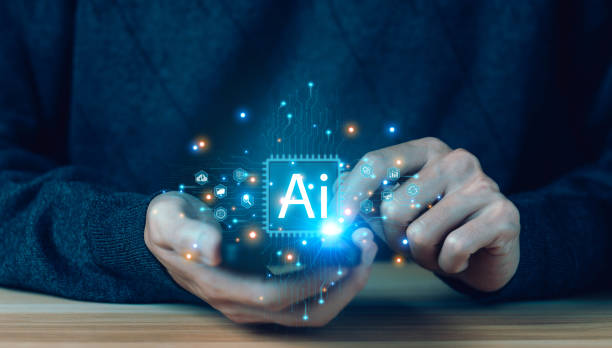
The future of #Artificial_Intelligence is very bright and full of potential.
#Artificial_Intelligence is expected to play a more important role in our lives in the coming years and create huge transformations in various fields, including medicine, industry, transportation, education, and entertainment.
However, the development and use of #Artificial_Intelligence also comes with challenges that must be addressed.
One of the biggest challenges of #Artificial_Intelligence is the issue of ethics.
With the development of smarter and more autonomous systems, the question arises of how these systems should be controlled so that they are not misused and human rights are respected.
For example, in self-driving cars, the question arises of who will be responsible in the event of an accident?
Another challenge of #Artificial_Intelligence is the issue of employment.
With the automation of many tasks by artificial intelligence systems, there is a concern that many people will lose their jobs.
To address this challenge, attention should be paid to the training and retraining of the workforce so that people can acquire the necessary skills to work in the new world.
Despite the challenges, the opportunities of #Artificial_Intelligence far outweigh its challenges.
#Artificial_Intelligence can help us solve complex problems, improve our lives, and build a better world.
To make optimal use of #Artificial_Intelligence, we must continue to research and develop in this field and use it responsibly and ethically.
Sustainable development of #Artificial_Intelligence should be on everyone’s agenda.
Applications of Artificial Intelligence in Industry and Economics
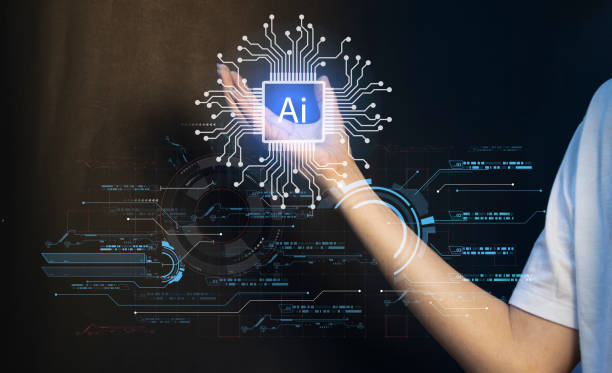
#Artificial_Intelligence is creating widespread transformations in the global industry and economy.
From automating processes and increasing productivity to improving decision-making and creating new products and services, #Artificial_Intelligence helps companies and organizations become more competitive and efficient.
In industry, #Artificial_Intelligence is used for automating production processes, quality control, predicting equipment failure, and optimizing the supply chain.
Automation of production processes can lead to cost reduction, increased speed, and improved product quality.
Quality control using computer vision can help identify defects and product flaws.
Predicting equipment failure can help prevent production downtime and reduce maintenance costs.
Optimizing the supply chain can help reduce transportation and warehousing costs.
In economics, #Artificial_Intelligence is used to improve decision-making, identify new opportunities, and create new products and services.
Intelligent decision-making systems can help managers make better decisions based on data and more accurate analysis.
Identifying new opportunities using data mining and market trend analysis can help companies offer new products and services that meet customer needs.
Creating new products and services using #Artificial_Intelligence can help companies increase their competitive advantage and expand their market share.
In short, #Artificial_Intelligence is a powerful tool that can help companies and organizations succeed in today’s competitive world.
However, the use of #Artificial_Intelligence requires investment in technology, workforce training, and organizational culture change.
Does your current website turn visitors into customers or drive them away? Solve this problem forever with professional company website design by Resaweb!
✅ Creating credibility and powerful branding
✅ Attracting target customers and increasing sales
⚡ Get a free consultation now!
The Impact of Artificial Intelligence on Our Daily Lives
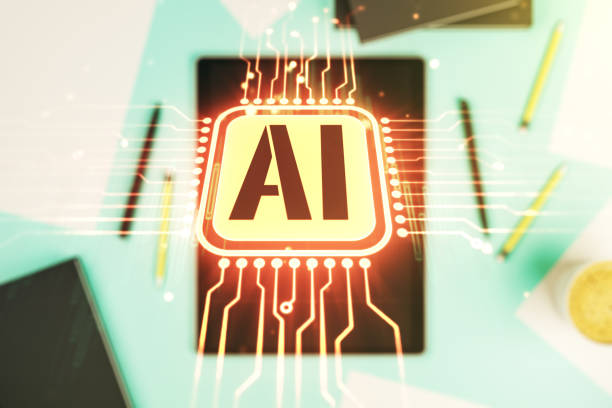
#Artificial_Intelligence is no longer an abstract concept, but is increasingly present in our daily lives and has significant impacts on how we live, work, and interact with the world around us.
From voice assistants and recommendation systems to self-driving cars and facial recognition, #Artificial_Intelligence is reshaping our lives.
One of the most important impacts of #Artificial_Intelligence on daily life is the ease of access to information and services.
Voice assistants like Siri and Alexa allow us to access information using our voice, manage our tasks, and control our smart devices.
Recommendation systems like the Netflix recommendation system help us find movies, music, and products that we like.
#Artificial_Intelligence also helps improve the quality of our lives.
In medicine, #Artificial_Intelligence is used for diagnosing diseases, developing drugs, and providing personalized healthcare.
In education, #Artificial_Intelligence is used for providing personalized training and evaluating student performance.
In transportation, #Artificial_Intelligence is used for developing self-driving cars and traffic management systems.
However, #Artificial_Intelligence also brings challenges.
One of these challenges is maintaining privacy.
With the collection and analysis of large amounts of data by artificial intelligence systems, there is a concern that our personal information is at risk.
Another challenge is the issue of discrimination.
If the data used to train artificial intelligence systems is biased, these systems can also be discriminatory.
How to Learn Artificial Intelligence? Resources and Learning Paths
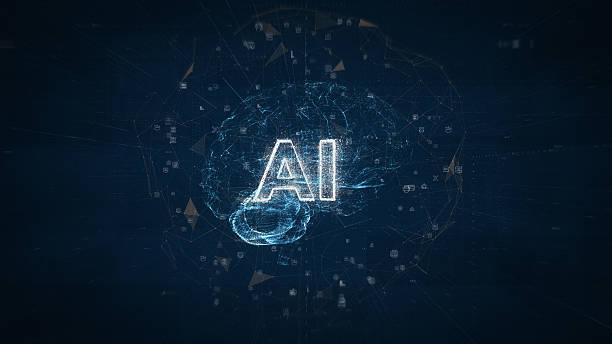
If you are interested in learning #Artificial_Intelligence, fortunately, there are many resources and learning paths that you can use.
From online courses and training books to practical projects and participation in #Artificial_Intelligence communities, there are various ways to learn this technology.
One of the best ways to start learning #Artificial_Intelligence is to participate in online courses.
Websites like Coursera, Udemy, and edX offer a variety of courses in different areas of #Artificial_Intelligence.
These courses usually include training videos, exercises, and practical projects.
Training books can also be a good source for learning #Artificial_Intelligence.
There are many books in this field that comprehensively explain the basic and advanced concepts of #Artificial_Intelligence.
Some of the famous #Artificial_Intelligence books include “Artificial Intelligence: A Modern Approach” by Stuart Russell and Peter Norvig, and “Deep Learning” by Ian Goodfellow, Yoshua Bengio, and Aaron Courville.
In addition to courses and books, doing practical projects can also help you learn #Artificial_Intelligence.
By doing practical projects, you can apply theoretical concepts in practice and strengthen your skills.
You can start with simple projects such as building a facial recognition system or a recommendation system and gradually do more complex projects.
FAQ
| Question | Answer |
|---|---|
| What is artificial intelligence? | It is the simulation of human intelligence in machines programmed to think like humans and imitate their actions. |
| What are the main branches of artificial intelligence? | They include machine learning, deep learning, natural language processing, computer vision, and robotics. |
| What is machine learning (Machine Learning)? | It is a branch of artificial intelligence that focuses on enabling systems to learn from data and identify patterns without explicit programming. |
| Mention examples of artificial intelligence applications in our daily lives. | Voice assistants (such as Siri and Alexa), recommendation systems in Netflix and Amazon, self-driving cars, and facial recognition programs. |
| What is deep learning (Deep Learning)? | It is a subset of machine learning that uses artificial neural networks with multiple layers (deep) to process large amounts of data. |
| What is natural language processing (NLP)? | It is a branch of artificial intelligence that focuses on enabling computers to understand, interpret and generate human language. |
| What are some of the ethical concerns related to artificial intelligence? | They include bias in data, privacy, job loss, and responsibility in case of errors. |
| What are the main benefits of artificial intelligence? | Increased efficiency, improved decision-making, automation of repetitive tasks, and discovery of complex patterns in data. |
| How is artificial intelligence used in healthcare? | In diagnosing diseases, discovering drugs, analyzing medical images, and providing personalized care for patients. |
| How do you see the future of artificial intelligence? | It is expected to continue to evolve at a rapid pace, affecting all aspects of human life, from industry to education and entertainment. |
And other services of Rasa Web advertising agency in the field of advertising
Smart advertising campaign: a combination of creativity and technology for online growth through custom programming.
Intelligent data analysis: an innovative service to increase website visits through the use of real data.
Smart advertising campaign: an effective tool to manage campaigns by customizing the user experience.
Smart digital advertising: a creative platform to improve click-through rates with precise audience targeting.
Smart brand identity: designed for businesses looking to increase website visits by optimizing key pages.
And more than a hundred other services in the field of internet advertising, advertising consulting and organizational solutions
Internet advertising | Advertising strategy | Advertorial
Resources
Applications of artificial intelligence in everyday life
,What is artificial intelligence? Applications and challenges
,What is Artificial Intelligence? (+ Types, Applications, and Benefits)
,What is artificial intelligence? Its applications, advantages and disadvantages
? With Resaweb Afrin, take your business to the peak in the digital world! With our expertise and experience in all areas of digital marketing, including multilingual website design, SEO, and social media management, we are with you to create a powerful and impactful presence for your brand.
📍 Tehran, Mirdamad Street, next to the Central Bank, South Kazerun Alley, Ramin Alley, No. 6

